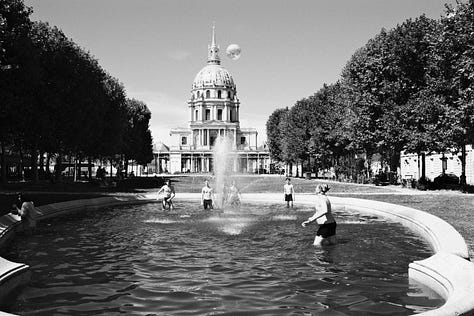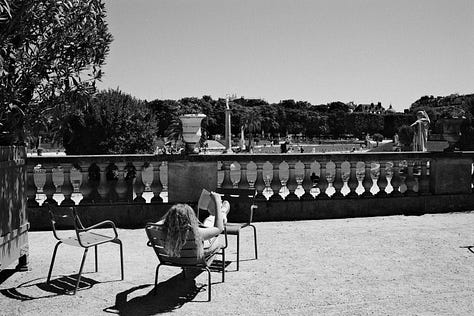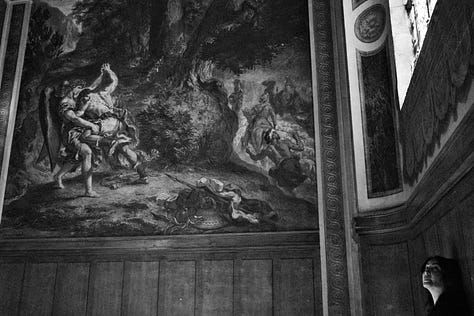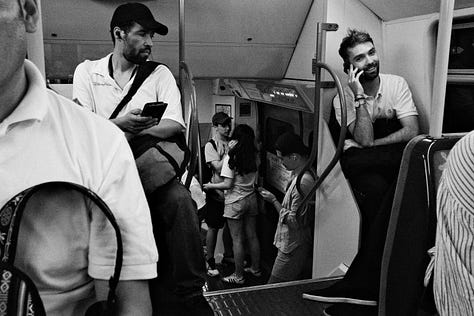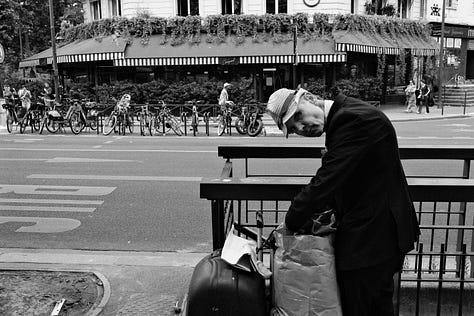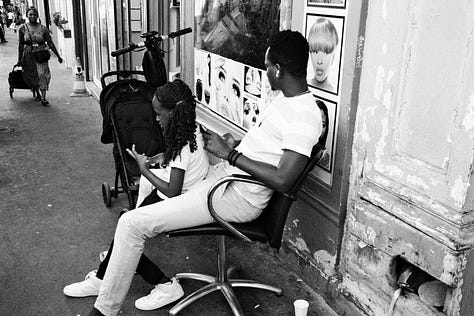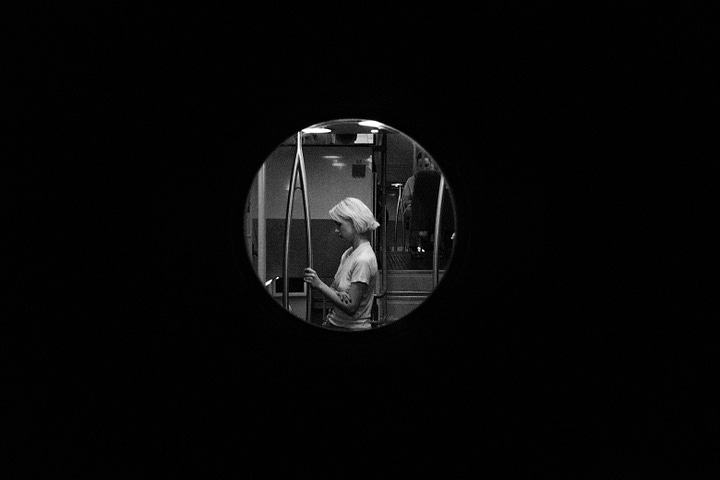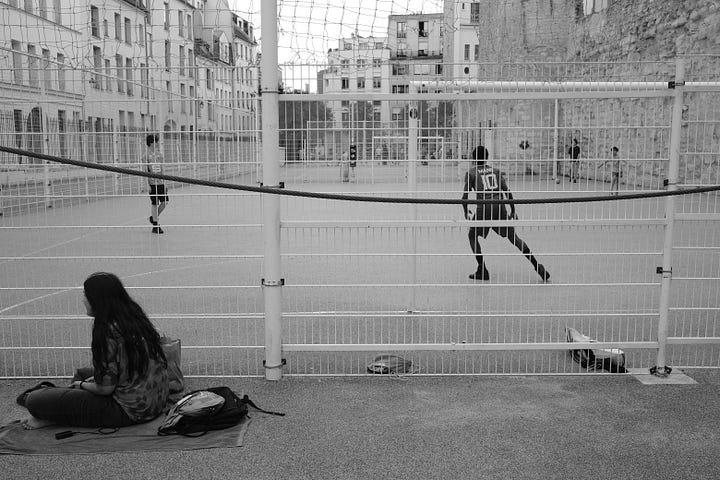I recently had the opportunity to drift through Paris. The first full day free of obligation I walked from the Louvre over the Seine to Jardin du Luxembourg via Bd Saint-Germain and Café de Flore before heading off to the former residence of Karl Marx, the Eiffel Tower, and the unearthed remains of a 1st century Roman amphitheatre that was playing host to an Italian film festival. I was intimidated by the city, facing both the real Paris and the Paris in my mind, worried that I would spoil or waste the occasion and somehow let it slip from me even as I stood, feet planted on the cobblestone.
The title of this blog Musing on the derive is an allusion to a concept proposed by The Situationist International, a radical group active from the late 1950s to early 1970s who had theorised about the accumulation of spectacle and commodities in modern capitalism, participated in the events of May 68, and had a keen interest in urban design and the life of public spaces. Guy Debord and others in the group suggested that life had become commodified, that cities had become colonised by advertisements and urban design stifled spontaneous enjoyment, constrained our movements, and lives to a small zone of activity. (I once joked to a friend that I had just shown her 80% of my life traversing from the Queen Victoria Market to the General Post Office Building when I lived in Melbourne CBD). Debord suggested that cities had psychogeographic effects, enabling or disabling certain emotions or modes of life, and that drifting through a city (a dérive), without a definite plan and going wherever the city took you and reflecting on the experience you could uncover the psychological effects of the organisation of space. To quote his own words from A Theory of dérive:
“In a dérive one or more persons during a certain period drop their relations, their work and leisure activities, and all their other usual motives for movement and action, and let themselves be drawn by the attractions of the terrain and the encounters they find there. Chance is a less important factor in this activity than one might think: from a dérive point of view cities have psychogeographical contours, with constant currents, fixed points and vortexes that strongly discourage entry into or exit from certain zones.”
My drift through Paris wasn’t quite a dérive in the sense employed by Debord, though he admits that a full, pure, dérive is a rare accomplishment. I had company, which he recommends, but I didn’t just happen upon the former residence of Marx or the Eiffel Tower, I had coordinates between which I worked my way by a combination of dead reckoning, street signs, and Google maps. I tried to be open to whatever opportunities the city presented to me and moved according to my eye and intuition.
Paris is a city that rewards a wanderer with a camera. You see it both through the mental furnishing of all the history and novels you’ve read and what it decides to give you through happenstance. Long boulevards with cafes where writers sat and formed their judgments of the world. The Luxembourg Gardens, where Hemingway claimed to have pilfered pigeons when he was hard up and children play with wooden sail boats in summer. An oasis away from the crowds and the heat. People relaxing in the dappled light piercing through the canopy. Kids running around chasing birds. Groups of old people sharing food and chatting. At les Invalides, a group of teenagers playing with a beach ball in a fountain while a woman holding a copy of L'univers et ses metamorphoses Roland Omnès wades in the green water directing her friend’s Iphone. In Montmartre, throngs of tourists ascend the steps of Sacré-Cœur while friendship bracelet scammers circle around and pick pocketers with clipboards try to distract and block the way up. North of Gare du Nord, gritty chaos and deprivation. A place where a camera isn’t welcome. Entering the Roman amphitheatre, Arènes de Lutèce, Nino Rota music meets you as you pass through a small dark tunnel as adults drink wine and wait while kids run through the upper stands and then jump down to the arena. Boulangeries everywhere. Cafes everywhere. Even out in leafy Noisy Champs, Paris is a vibe.
This blog isn’t going to be report of my derives through physical space. Initially, I intended this to be a street photography blog. The title playing on the idea of street photographers as modern flaneurs drifting through the city and recording a vision of how it feels to be alive and situated in a particular time and place. Yet, as I start to write, I think this is going to be a drift through myself and whatever occurs to me. Perhaps focused on candid photography of life in public spaces but not limited to it.
